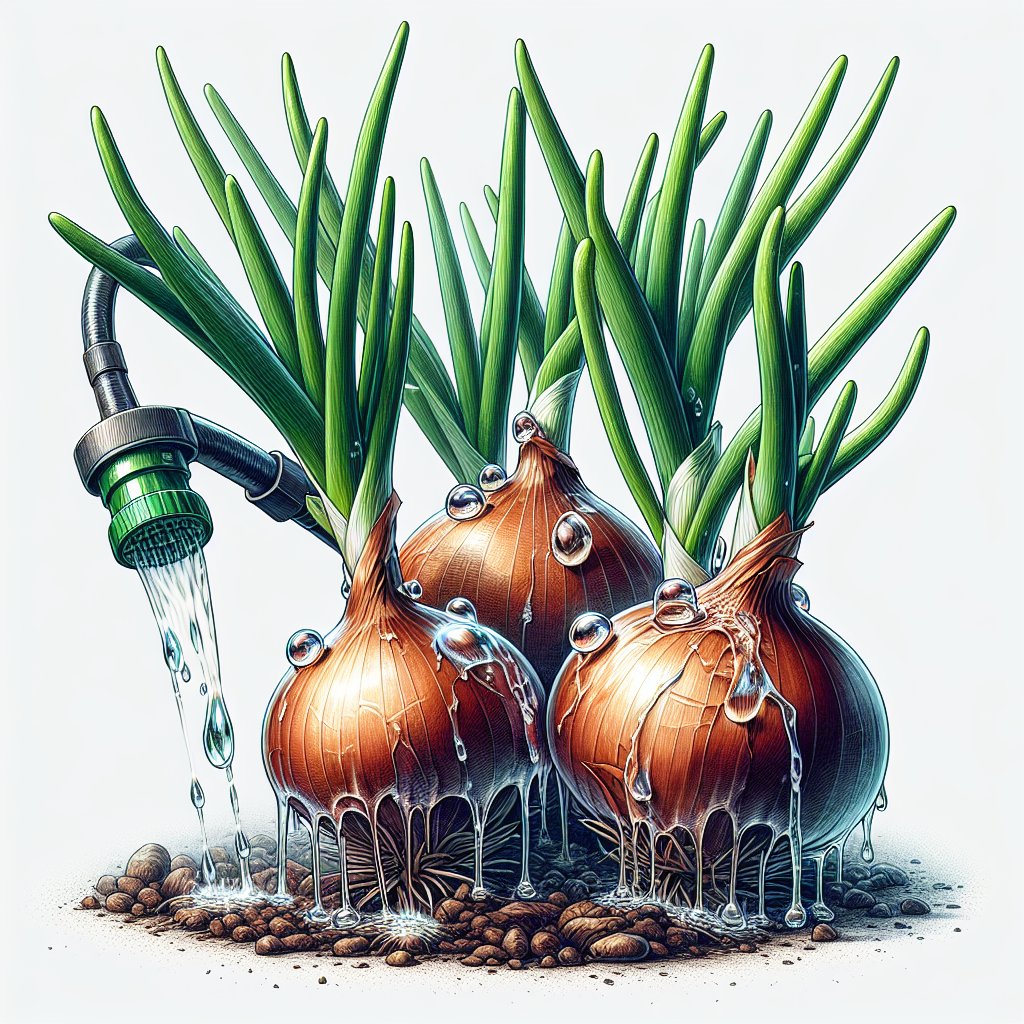Mastering the Art of Slow Drip Watering for Onion Containers
Onions are a staple in many kitchens worldwide, known for their unique flavor and versatility in various dishes. Growing onions in containers can be a practical and rewarding gardening experience, especially for those with limited space or who prefer the convenience of container gardening. However, successfully growing onions in containers requires careful attention to their watering needs. In this article, we will explore the art of slow drip watering for onion containers, providing you with essential tips and techniques to ensure healthy onion growth and a bountiful harvest.
Container Selection and Preparation:
Before delving into the specifics of slow drip watering, it is crucial to choose an appropriate container for growing onions. Select a container that is at least 8 inches deep to allow enough room for bulb development. The diameter should be wide enough to accommodate multiple onion plants but not too crowded.
Once you’ve chosen your container, ensure proper drainage by adding drainage holes at the bottom. This will prevent waterlogged soil, which can lead to rotting roots and other diseases. Fill the container with a well-draining potting mix rich in organic matter such as compost or aged manure.
Understanding Onion Watering Needs:
Onions have shallow root systems compared to other vegetables, and it’s essential to provide them with consistent moisture without overwatering. Onions require regular watering during their growth period to ensure healthy foliage development and bulb formation. However, they are susceptible to root rot if left sitting in waterlogged soil.
Slow Drip Watering Techniques:
1. Use Self-Watering Containers:
Consider using self-watering containers specifically designed for slow drip watering. These containers have built-in reservoirs that supply water directly to the roots as needed while preventing excessive water accumulation at the bottom.
2. Drip Irrigation Systems:
Installing a drip irrigation system is another effective way to provide consistent moisture to your onion containers while avoiding overwatering. Drip irrigation systems supply water directly to the base of the plants, minimizing water waste and reducing the risk of diseases associated with overhead watering.
3. Soaker Hoses:
Soaker hoses can also be utilized for slow drip watering. These hoses have tiny pores along their length, allowing water to seep into the soil gradually. Place the soaker hose along the container’s base, ensuring that it covers the area where the onion roots are located.
4. Mulching:
Applying a layer of organic mulch around your onion plants can help retain soil moisture and prevent evaporation. Mulching also serves as insulation, keeping the soil temperature stable and providing additional protection against weed growth.
Watering Schedule:
To ensure optimal growth, onions require consistent moisture throughout their development stages. While every growing environment is unique, a general guideline for slow drip watering onions in containers is as follows:
1. Initial Planting Stage:
After planting onion sets or seedlings in containers, thoroughly water them to settle the soil and encourage root establishment. Water until you see it draining from the bottom drainage holes.
2. Young Onion Stage:
During the initial stages of growth, water your onion containers once or twice a week, depending on environmental conditions such as temperature and humidity. The goal is to keep the soil lightly moist but not overly saturated.
3. Bulb Development Stage:
As your onions continue to grow and bulbs start forming, increase watering frequency to every two to three days or when the top inch of soil feels dry to touch. Monitor their moisture needs closely during hot summer months.
4. Maturation Stage:
As your onions near maturity and start yellowing or flopping over, reduce watering gradually to allow them to dry out before harvest. This will improve their storage potential.
Monitoring for Overwatering or Underwatering:
It’s crucial to pay attention to your container-grown onions’ foliage appearance as it can be an indicator of their watering needs. Overwatered onions may exhibit yellowing leaves, wilting, or a foul smell from the soil. On the other hand, underwatered onions may have dry, crispy foliage with stunted growth.
To avoid overwatering or underwatering, always check the soil moisture level before watering. Insert your finger into the soil up to the second knuckle and assess its moisture content. If it feels moist, delay watering for another day or two. If it feels dry, water your onions thoroughly but avoid saturating the soil.
Conclusion:
Mastering the art of slow drip watering for onion containers is essential for achieving healthy onion growth and a successful harvest. By selecting appropriate containers, understanding onion’s watering needs, and applying proper slow drip techniques, you can provide consistent moisture while avoiding overwatering or underwatering. Remember to monitor your plants closely and adjust your watering schedule as necessary. With patience and dedication, you’ll soon be enjoying homegrown onions packed with flavor in your favorite dishes!














